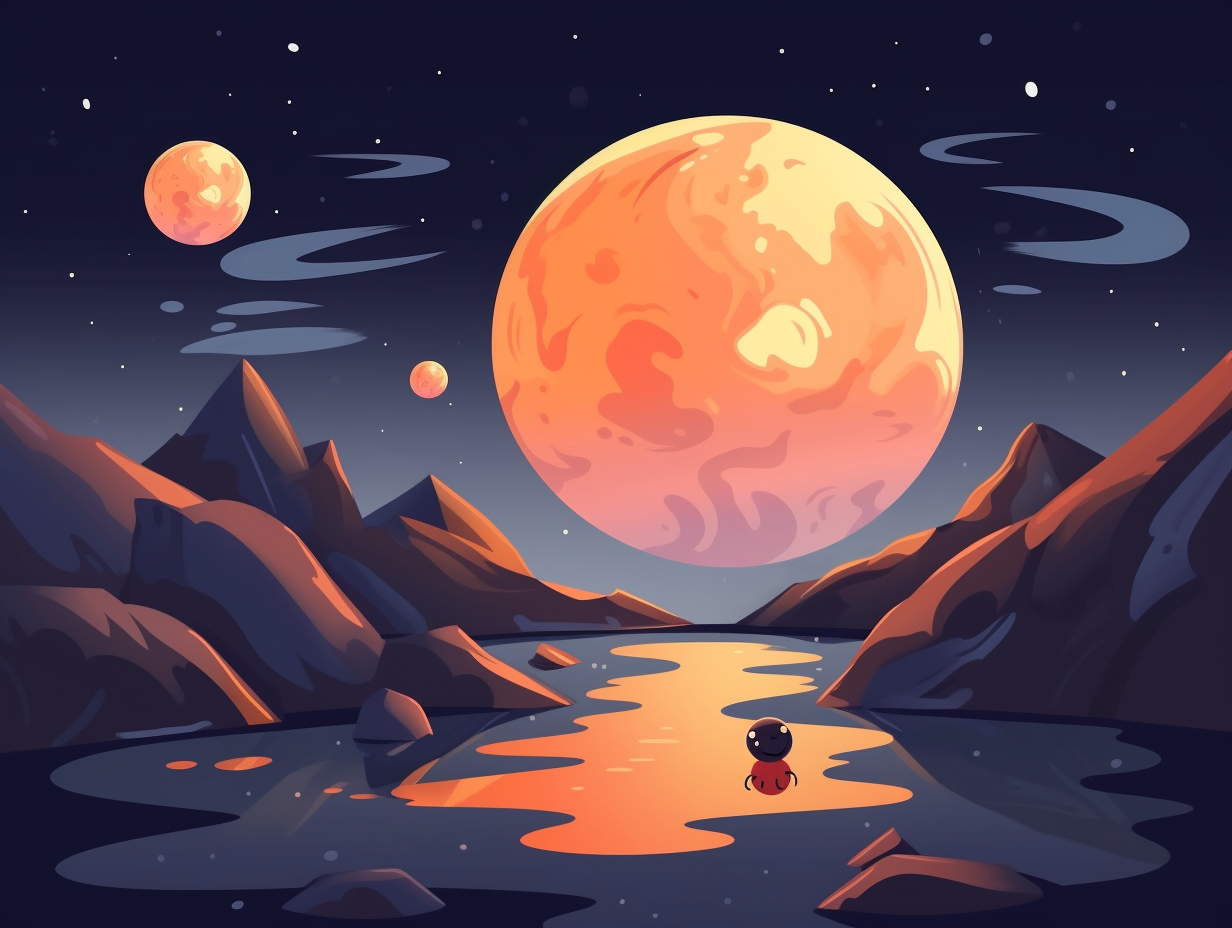14 Amazing Fun Facts About Dwarf Planets That Will Blow Your Mind!

1. Eris: The Massive Dwarf Planet
Move over, Pluto – there's a new heavyweight in town, flexing its celestial muscles and leaving astronomers star-struck: Eris is now the most massive dwarf planet in our solar system, boasting a weight that's a whopping 27% more than the former "ninth planet". Its slow-motion orbital dance lasts 559.07 Earth years and takes place in the icy-rocky outskirts called the scattered disc. Discovered in 2005 by a team led by Mike Brown at the Palomar Observatory, Eris was named after the Greek goddess of strife and discord – a fitting nod to the ruckus it caused when it snatched Pluto's planetary crown, only to be categorized as a mere dwarf planet itself.
Source => en.wikipedia.org
2. Ceres: The Friendly Neighborhood Dwarf
Hey there, space travelers! Buckle up for a journey to Ceres, the friendly neighborhood dwarf planet – and the only one who decided to hang out within Neptune's orbit rather than run off to live with Pluto and the cool kids: This celestial underdog is not only one of more than 200 discovered dwarf planets in our solar system, but also intrigues scientists with its unique composition, ability to harbor potential microscopic life, and a relentless refusal to be overshadowed by its larger, more popular planetary peers.
Source => en.wikipedia.org

Discover the secret behind Pluto's heart-shaped feature, where a peculiar thermostat of frozen nitrogen creates intense winds and shapes its surface in mesmerizing patterns!
=> Fun Facts about Pluto
3. Ceres: The Salty Space Surprise
Who knew outer space could be so salty? When we're not talking about internet behavior, it turns out we're discovering unexpected deposits: Ceres, a dwarf planet residing in the asteroid belt between Mars and Jupiter, not only holds the title for the first asteroid discovered in 1801 but also sports intriguing bright spots on its surface - which NASA's Dawn spacecraft uncovered to be salt deposits, giving Ceres a unique and salty flair compared to its fellow dwarf planets.
Source => rmg.co.uk
4. Pluto vs. Eris: Diameter Showdown
Pluto and Eris were caught in an outer space edition of "Who Wore It Better": Turns out they're sporting the same diameter, but Eris wins the heavyweight title with its denser composition of rocky material and a stylish ice mantle, while Pluto rocks a half-and-half ensemble of ice and rock.
Source => universetoday.com

5. Haumea: The Cosmic Flattened Football
Haumea, also known as the cosmic flattened football, had one too many tackles from the universe: this unique dwarf planet's elongated shape is due to its rapid spin and a possible ancient collision, which stripped away much of its surface ice and launched it into a peculiar spinning frenzy.
Source => space.com
6. Haumea: The Fast-Spinning Weightlifter
In a galaxy far, far away, there's a dwarf planet that's been bench-pressing, giving it a physique Arnold Schwarzenegger would be envious of – and it even has its own entourage of moon sidekicks: Haumea, the elongated, football-shaped dwarf planet, rotates so quickly it completes a full spin in just four hours, resulting in its unique shape, and boasts an asteroid-exclusive feature of having two moons, Hi'iaka and Namaka, discovered in 2005 and 2008, respectively.
Source => en.wikipedia.org
7. Makemake: The Slow Rotation Mystery
If you've ever caught yourself yawning during a spinning class, you might have something in common with Makemake: it's surprisingly slow at making rotations! The serious reveal: This dwarf planet takes a cat-nap-worthy 22.83 hours to complete one rotation, possibly due to tidal forces from its only known moon – a leisurely pace that remains puzzling for scientists.
Source => en.wikipedia.org
8. Ceres: Damp Rock Star of the Asteroid Belt
Ceres-sly, this dwarf planet should change its name to "Thalassic World" or "Damp Rock Star": Ceres, the pride and joy of the asteroid belt, not only boasts of hidden oceans beneath its surface, but also tantalizes astrobiologists with traces of ammonia-rich minerals and a globally distributed carbon component, hinting at a rock-water alteration process in action.
Source => mdpi.com
9. Orcus: The Anti-Pluto
Move over, Bizarro Superman, there's a new anti-hero in town: Meet Orcus, the "anti-Pluto" of our solar system! Unlike its frosty nemesis, this trans-Neptunian object embraces the dark side of dwarf-planet-dom: Though not officially recognized by the IAU as a dwarf planet just yet, many astronomers agree that Orcus checks all the boxes and could be welcomed into the fold any day now.
Source => universetoday.com

10. Makemake: The Frosty Celestial Bachelor
If Makemake had a dating profile, it would definitely send shivers down your spine – quite literally: This frosty celestial bachelor boasts a surface temperature of around -240 degrees Celsius (-400 degrees Fahrenheit), likely due to an impressive collection of frozen methane pellets and a reddish-brown complexion, thanks to a fashionable blend of sunlight-baked organic compounds and minerals.
Source => planetary.org
11. The Five Dwarf Planet Friends
Pluto may have been kicked out of the "cool kids" planet club, but it certainly wasn't left lonely in the celestial playground: there now exist five officially recognized dwarf planets, including Pluto, bonded by their small stature, adorable roundness, and snuggling up to the big space rocks in our solar system.
Source => asc-csa.gc.ca
12. Ceres: The Cosmic Mud Bath Spa
Dwarf planet Ceres could give Earth's best spas a run for their money with its unique surface composition resembling a cosmic mud bath: Ceres boasts a mixture of water ice and hydrated minerals like carbonates and clay and, as the closest cryovolcanic body to the Sun, houses mineral-rich brines that offer prime real estate for potential microbial life.
Source => en.wikipedia.org
13. Eris: The Sunlight's Long Journey
Eris, the celestial cold shoulder: This frosty dwarf planet is so far away that sunlight practically has to pack a lunch and listen to three podcasts before reaching it, taking a whopping 9.4 hours to travel the 68 astronomical units.
Source => socratic.org
14. Pluto's Moons: The Celestial Twister Game
Playing a game of celestial Twister: Pluto's five miniature moons don't just orbit the dwarf planet itself, but rather tango around the barycenter – a combined center of mass shared between Pluto and its largest moon, Charon – resulting in an extraordinary gravitational dance party that's out of this world!
Source => latimes.com
Related Fun Facts




















